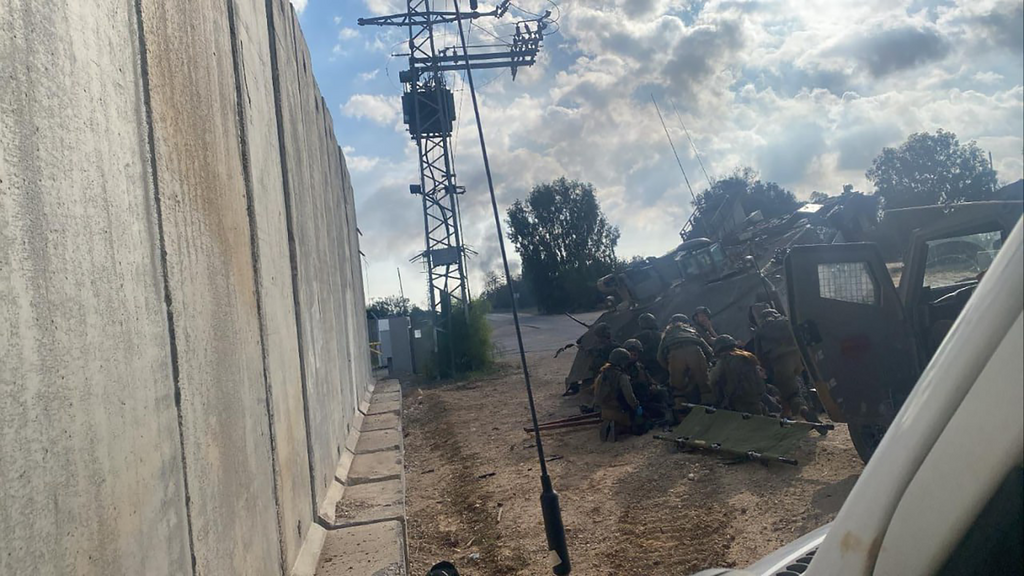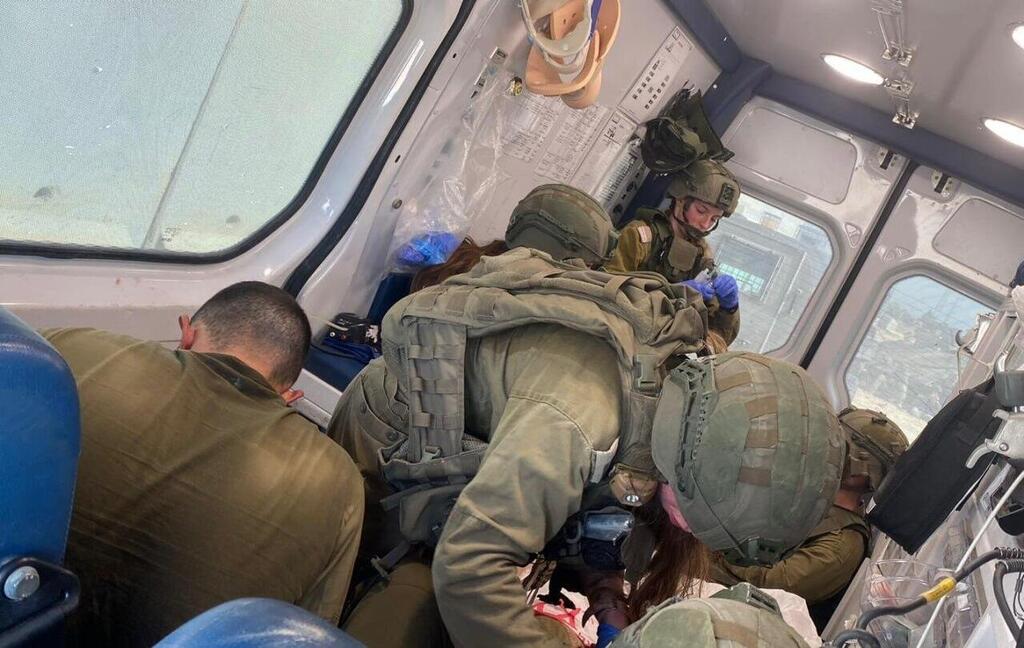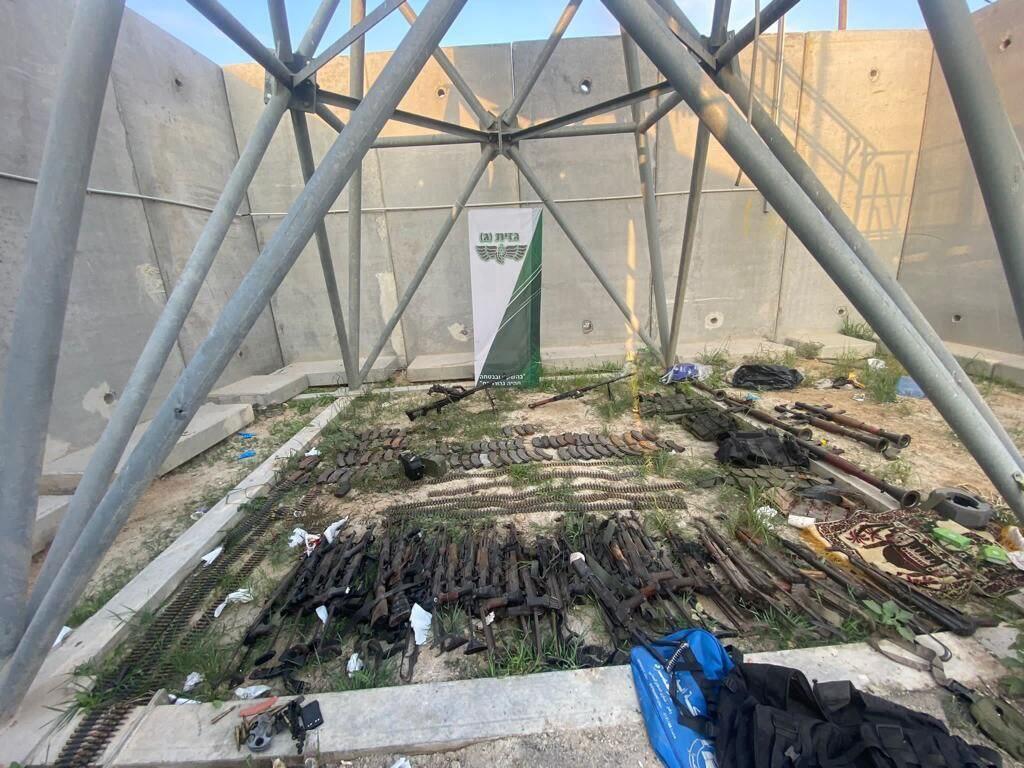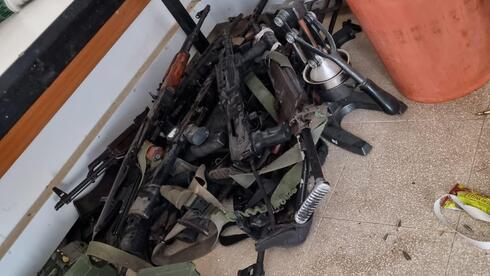In the first hours of the attack, a small group of Israeli soldiers and reservists at Outpost Sufa, joined by a lone tank crew, fought for hours to repel waves of armed terrorists trying to breach the border fence.
Fighting in the Sufa Outpost on October 7
(Video: IDF)


The battle around the outpost and the nearby Dangour Monument became one of the fiercest engagements of that day. Fourteen Israeli soldiers were killed and about 50 were wounded. The fighting, which stretched from the early morning into the afternoon, prevented a much larger incursion into the surrounding kibbutzim.
Those killed in the battle were:
Maj. Ido Israel Shani, Maj. Roey Chapell, Capt. Eyal Klein, Sgt. Maj. Salman Eben Marei, Sgt. Amir Lavi, Staff Sgt. Tal Levy, Staff Sgt. Amit Most, Staff Sgt. Tomer Yaakov Mizrahi, Staff Sgt. Daniel Bezgodov, Staff Sgt. Ofir Melman, Staff Sgt. Hallel Shmuel Saadon, Sgt. Nahman Dekel, Sgt. Segev Schwartz and Staff Sgt. Gali Roy Shakotai.
According to an IDF investigation, a single tank positioned at the border at the start of the attack played a decisive role in reducing casualties and preventing terrorists from breaking through to nearby civilian areas.
The tank was commanded by Lt. A, from the Vulcan Company of the 77th Battalion. His crew fought for hours, firing dozens of shells at Hamas terrorists as they surged toward the border.
“As on any morning, by 5:30 we were already in the vehicles, doing readiness drills,” Lt. A recalled. “When the attack started, I heard a kind of whistle — and then saw an explosion at the outpost.”
He ordered his driver to move into position, but a Hamas drone dropped explosives nearby, missing the tank by only two meters. “We were all tense, trying to understand what was happening,” he said. “When we reached our position, I realized we had to start firing.”
His first shell hit its target, but at that point, he said, they did not grasp the scale of what was coming. “We’d heard talk of infiltrations, but we didn’t understand how many.”
Minutes later, he spotted a pickup truck about 800 meters away heading toward the fence. “Maj. Chapell told me over the radio that I was authorized to destroy anything I saw. I gave the order to fire. The truck exploded with a massive blast — we understood it was packed with weapons.”
Looking north, the tank crew saw dozens of terrorists running from Gaza toward the fence. “We immediately started firing, and none of them made it into Israel,” said Lt. A. The crew prevented an infiltration toward Nir Yitzhak.
Half an hour later, another wave of attackers approached from the south, aiming for Kibbutz Holit. “There were four trucks and a lot of terrorists,” he said. “We fired — and none managed to break through.”
3 View gallery


Fighting at the Sufa Outpost
(Photo: Yuval Chen)
For more than three hours, the crew held its position under constant fire. “Each Hamas truck carried about 15 terrorists armed with Kalashnikovs and RPGs. We fired about 35 shells,” he said. “Four drones dropped explosives on us, and six RPGs were fired at us — four of them hit.”
Inside Outpost Sufa, fighting erupted almost simultaneously. Lt. E, then a platoon commander in the Nahal Reconnaissance Unit’s Orev Company, was stationed at the base. At 6:29 a.m., he awoke to massive explosions.
“It wasn’t just sound,” he said. “You felt the mortars exploding in your body.”
Following protocol, the soldiers ran for shelter in the dining hall, which also served as the protected space. “Everyone started gathering there, still not understanding what was happening,” said Lt. E.
Nine minutes into the attack, he received a call from his company commander, Maj. Roey Chapell, who was leading the defense near the fence. “That call changed how everything unfolded,” Lt. E said. “He told me there was a complex situation, that armed terrorists had crossed. While he was speaking, I heard him on the radio directing the mortar section — and then the line went dead.”
Soon afterward, mortars began falling around the outpost, followed by bursts of automatic fire. “Rockets are one thing,” said Lt. E. “But hearing small-arms fire close by — that’s something else.”
Climbing a guard tower with his marksman, he saw about 15 terrorists advancing. “At first we thought they were hundreds of meters away, but they were only 10 or 15 meters from us,” he said. “I started firing, and within seconds we were under fire ourselves. The tower wasn’t armored, so we jumped down to avoid getting hit.”
By then, dozens of terrorists had surrounded the outpost. The defenders spread out to cover the different entrances while the mortar team provided cover fire from the rear.
3 View gallery


At 7:15 a.m., the driver of Chapell’s vehicle called from near the Dangour Monument, reporting that Chapell and his radio operator had been killed and that he was trapped under fire.
“I realized my commander was gone and that I was in charge now,” said Lt. E. “I had a wounded friend calling for help — but we couldn’t even step outside to reach him.”
Moments later, a huge explosion hit the outpost. “I felt a blow to my back and neck,” he said. “I reached under my vest and my hand came out full of blood.”
Staff Sgt. Hallel Shmuel Saadon, who would later fall in battle, noticed terrorists pushing their gun barrels through small openings in the outpost walls. “Thanks to him, we understood the threat and pulled back toward the center of the outpost,” said Lt. E. “We realized the walls weren’t protecting us. It was a terrible feeling — losing control of the base.”
Wounded soldiers began arriving at the dining hall, some in critical condition. Medics Staff Sgts. Amit Most and Ofir Melman rushed to treat the injured but were killed while doing so.
The terrorists eventually breached the outpost and pushed the remaining defenders into the dining hall. “We took positions at the entrance, covering outward,” said Lt. E. “Saadon fell while shielding the wounded being brought inside.”
Then a grenade was thrown into the room. “It was a huge explosion — total shock,” he said. “We used refrigerators as makeshift barriers and kept firing.”
“About 15 to 20 grenades were thrown at us,” Lt. E recalled. “Everyone in the room was wounded in one way or another. We ran out of medical supplies and started making tourniquets from belts and rifle slings.”
Cut off from communication, seven able-bodied soldiers continued fighting for six to seven hours. Around noon, a massive blast hit the back door — the terrorists had planted explosives in an attempt to blow it open. “Luckily no one was hurt,” he said. “We posted two men there and kept defending both entrances.”
Eventually, Lt. E managed to slip his phone through a back opening and send messages to nearby officers. “Around 1:30 p.m., I got word that a naval commando unit was approaching. Soon after, we heard different gunfire outside and realized they’d arrived.”
Meanwhile, Lt. A and his tank crew patrolled near the outpost, destroying more terrorist trucks and a convoy of motorcycles headed toward Holit. Around 2 p.m., they linked up with the naval commandos and began clearing the base.
3 View gallery


Four terrorists who had barricaded themselves in a pillbox opened fire. Lt. A fired a shell that destroyed the position, ending the battle. “That’s when it was finally over,” he said.
But victory came at a terrible cost. “Hearing over the radio, ‘The commander is down,’ you imagine it’s a drill,” said Lt. A. “Then you realize it’s real. There’s no one left to give you orders. Those were moments of tense silence. No one cheered when we took out terrorists.”
He added, “People need to know — everyone who fought there that day gave everything to stop it. We were outnumbered, but the soldiers and tank crews fought like lions. The army was there. It was hard, but it stood.”
Lt. E said his team fought for hours despite losing friends in front of them. “Combat shock was real, but everyone supported one another,” he said. “That’s what let us hold out. That spirit was powerful.”
Inside the dining hall, the defenders ran out of food and water. “The wounded kept asking for water and there was nothing,” said Lt. E. “We found some grape juice from Friday night dinner and halva bars. I started tossing them around — it lifted morale for a moment.”
Since the battle, the Nahal Reconnaissance Unit has carried the memory of that day. “Many were killed or wounded,” said Lt. E. “We were alone as a team — it was a real test. Our medics, Ofir and Amit, died running to help people they didn’t even know. Hallel covered the wounded with his body until he was the last man outside.”
He paused before adding: “If even one soldier or civilian was killed, that’s not a success story. I’m at peace with how we fought, given the situation and the tools we had. But with the number of dead and how the area looked — it wasn’t victory.”

